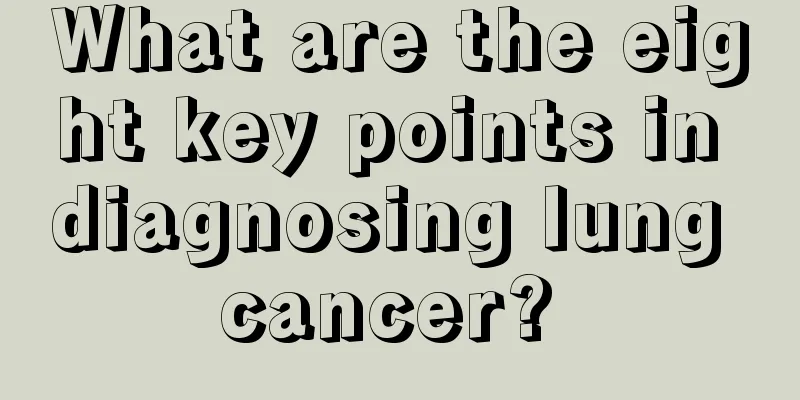What are the eight key points in diagnosing lung cancer?

|
In recent years, the incidence of lung cancer has gradually increased. Although modern technology is advanced, the symptoms of early-stage cancer patients are not obvious due to the hidden nature of lung cancer. Clinically, most lung cancer patients have already reached the middle and late stages when they show obvious symptoms. Here, we remind our friends that even if you are not sick, you should pay attention to it. Even if you don’t consider yourself, you should consider your family. The health of your family is your own health. Eight key points in diagnosing lung cancer 1. Repeated examination of sputum for cancer cells may yield positive results, which are of diagnostic value. 2. If the lung puncture is accurately positioned, a smear examination of the puncture material can generally obtain a positive result, which is of diagnostic value. 3. Chest X-ray and radiography can reveal various circular shadows, pneumonia, atelectasis, pleural effusion, etc. Chest X-ray, CT and MRI examinations can help us understand the relationship between the size of the tumor and the lung lobe, segment and bronchi. Bronchial iodized oil contrast can be performed if necessary. 4. The early symptoms are not obvious. As the disease progresses, symptoms such as cough, bloody sputum, chest pain, fever, and shortness of breath may appear. 5. Bronchoscopy can directly observe the lesions, and can also take biopsy samples for pathological examination and bronchial secretion smears for cancer cells. 6. Late-stage patients experience fatigue, progressive weight loss, and corresponding symptoms caused by the tumor compressing the surrounding tissues, such as hoarseness due to compression of the recurrent laryngeal nerve. 7. Superficial lymph node puncture or biopsy: When lung cancer has not yet been confirmed or is accompanied by widening of the upper mediastinum, puncture and aspiration of cells or biopsy of palpable lymph nodes on the neck and clavicle, suspicious subcutaneous masses, and suspected cancerous lymph nodes in other parts can be performed to obtain a pathological histological diagnosis. 8. Clinically, it is necessary to differentiate some diseases that are easily confused with lung cancer. Pulmonary tuberculosis has symptoms such as cough, blood in sputum, chest pain, and hot flashes. The sputum tuberculosis test is positive and anti-tuberculosis treatment is effective. Pneumonia generally develops quickly and has obvious systemic symptoms. After antibacterial treatment, the symptoms disappear and the lesions are absorbed quickly. In addition, it should also be differentiated from lung abscess, pulmonary pseudotumor, mediastinal tumor, bronchial fluid cyst and pulmonary arteriovenous aneurysm. The above is an introduction to "What are the eight key points in lung cancer diagnosis?" If you don't know whether you have lung cancer, you can refer to the above methods for examination. If you have other questions, please consult our experts online or call for consultation. Lung cancer http://yi.qianlong.com/zhongliu/feiai/ |
<<: What are the three major clinical types of lung cancer?
>>: Nutritional therapy for lung cancer
Recommend
Can you die from skin cancer in summer?
Will I die if I get skin cancer in summer? Summer...
What disease is HPV18 positive
The HPV18 virus causes nipple cancer. It causes m...
Rectal wall thickening
Thickening of the rectal wall may be caused by pa...
I have had diarrhea for a few days. What's going on?
Diarrhea is very harmful to the stomach and intes...
How many meridians are there on the legs
As people pay more attention to meridian care, fi...
How to remove odor in the house?
In recent years, the country has become richer an...
Lose weight and sagging breasts
Obesity is something that many people do not want...
How to wash oil stains on down jackets
For those of you who often wear down jackets, you...
What is emotion
I believe that everyone has often heard the term ...
Can I not wash my face before running in the morning?
Running is very beneficial to the body. The best ...
The success rate of transplanting a frozen embryo
Many people are not very concerned about embryo t...
Can esophageal cancer be cured by folk remedies?
Esophageal cancer is a very serious cancer that c...
How to diagnose laryngeal cancer
Having a healthy body is everyone's common wi...
What should I do if I have lung cancer
What should I do if I get lung cancer? Most peopl...
Can I use a stainless steel pot to decoct medicine?
Nowadays, people have a variety of medical option...









